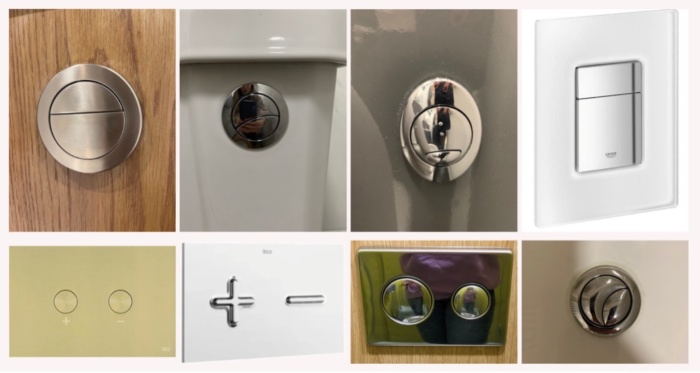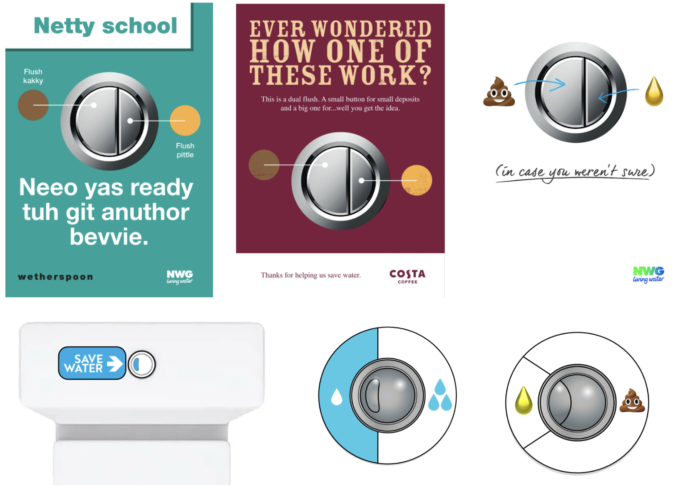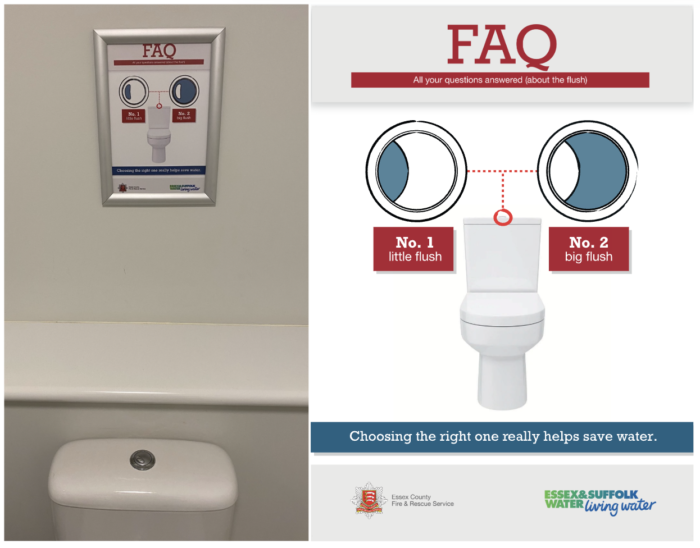Background
Dual flush toilets were introduced as a water saving measure, giving users the option for a smaller flush when that’s all they need. However, not everyone always uses the small flush when they should, meaning that water is being needlessly flushed away every day in the UK.
We worked with Essex and Suffolk Water (part of the Northumbrian Water Group) to tackle this problem by developing a simple, scalable intervention to encourage more people to use the small flush, more of the time.
Insight
Toilets use the second-largest amount of water in the home (second to bathing/showering), equating to 30% of daily water use. Dual flush toilets are widespread, with an estimated 30-40% of UK homes being fitted with them. Correct use of dual flush presents a sacrifice-free way to save water, with a small flush using on average 2 litres less water per flush, with no change to an individual’s experience.
However, due to a huge variety of confusing designs and a lack of understanding, approximately half of people who have dual flush use the big flush unnecessarily, leading to an estimated 6 million litres of water being wasted across NWG’s service area (the North East and Essex and Suffolk) every day.

Intervention
Flushing is a highly habitual behaviour. Therefore, we knew that not only did we have to give people the knowledge to flush correctly, we also had to interrupt their existing habits. To do this, we designed a range of poster and sticker concepts using two main behavioural tools:
- Prompt at the right moment: being in the time and place when people are flushing, in order to break through automatic behaviours
- Salience: making posters and stickers stand out so that they draw people’s attention

Initial mock-ups created to illustrate our idea
Implementation
Once we’d developed our intervention concept, we needed to find a partner to pilot it with. We decided that a workplace environment would work well, as it would be easier to control the interventions and measure water use, and the same people would use the toilets multiple times, giving us more chances to break existing habits - hopefully at home as well as at work.
We partnered with Essex Fire and Rescue Service, working with them to design posters relevant to the types of dual flush that they had and that fitted their brand. Posters were placed at eye-level above the toilet cistern in the Essex Fire and Rescue Service’s office headquarters so that they were clearly visible when flushing over a 4-week intervention period.

Impact
Footfall data and water meter readings were recorded weekly during the 4-week pre-intervention period and 4-week post-intervention period to establish water use per person. Results indicated a positive impact, with an 11% reduction in water use observed post-intervention, when irregular meter readings were controlled for.
Additionally, pre- and post-intervention staff survey results indicated that:
- Understanding of dual flush increased - with some individuals claiming they were previously using the buttons the other way around
- Use of the correct button increased
- Employees felt positively about the posters, finding them informative, important and clear
Overall, the pilot illustrated real potential for this intervention to drive down water use at a very low cost, giving it a high return on investment.